The passage from Pigadhia, Karpathos to Lindos, Rhodes was about 57 nautical miles so we set off earlier than usual, shortly after 8 am. We still had to make good speed in order to arrive and be settled well before dark. Initially, it seemed the wind was teasing us as we thought it was filling in so we would turn the engine off and set the sails for downwind sailing, only to find the wind dropped again just a few minutes later so the genoa had to be furled again ….. or was it the skipper just trying to keep the crew busy??? This happened several times until we rounded the southern tip of Rhodes and then we began to have a nice reach. Indeed, we ended up putting a reef in the mainsail and genoa as we approached Lindos.
We encountered several ships between the two islands as it seems it is the favored route for those transiting from Suez to Istanbul and the Black Sea. Indeed, we decided to slow down to let two ships pass ahead of us shown on AIS below.


Lindos is a lovely natural harbour (top picture), dominated by a castle on the hilltop on the southern side, and is now a very popular anchorage and tourist boat destination for boats from Rhodes. We found the holding to be good so were quite happy to go ashore that evening to check out the town. The sandy bay is lined with cafes and tavernas that are popular with beach-goers during the day but are much more peaceful in the evenings. The charming town with narrow, higgly piggly streets and white-washed walls is up a fairly steep slope from the harbour but had too many tourists for our liking. The next day we hiked slowly (because of the heat) up to the acropolis at the top of the hill overlooking the bay, a very rewarding exercise and which made the swim off the boat afterwards even more enjoyable. Although there were earlier civilizations on Rhodes, the Dorians are credited with building the first settlements here around the 8th century BC, though many later civilizations added to the original Temple of Athena Lindia, including the Romans, Byzantines, Knights of St John and the Ottomans making for interesting, if a little confusing, ruins to see today.
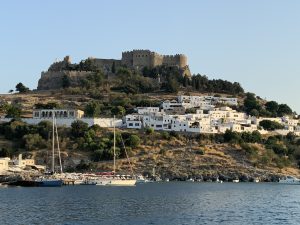
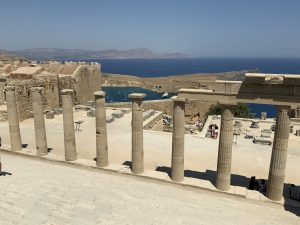
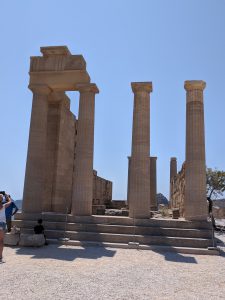
From Lindos, we had a relatively short hop to Rhodes at the Northern tip of the island. As expected, there was very little wind initially but we enjoyed a pleasant sail for the last hour or so under genoa alone. We had made a reservation in Mandraki harbour, where the Colossus of Rhodes once stood and today is marked by the St Nicholas fort and statues of two deer on colonnades on either side of the entrance.

The strategic location of Rhodes, between the Aegean Sea and Egypt and the Middle East, has shaped its history. Although at a pivotal trade location, generating considerable wealth for the island, its position also was a focus for invading armies. Indications are that it was first settled around 1,800-1,700 BC, by the Minoans. The city of Rhodes was established in 408 BC, and was allied with Alexander the Great until his death in 323 BC. The island was occupied by the Byzantines 395 AD, the Arabs 653 AD, the Genoese 1046 AD, the Knights of the Order of St. John of Jerusalem 1309 AD, the Ottomans 1522 AD, Italy 1912, and finally the Greeks in 1947. Many of the buildings built by the Knights are still intact and are part of this superb living historical site.
The Medieval old city of Rhodes, a UNESCO World Heritage Site since 1988, is most impressive with its massive double walls, mote and seven gates protecting it. The gates were built and protected by the seven groups, constituting the Order, including French, Spanish, and English parties. The island was the last site occupied by the Crusaders for their incursions into the Holy Land. We walked along the top of the fortress walls so had a good impression of the scale of the city that includes a couple of churches, mosques, a Jewish quarter and of course the Palace of the Grand Masters. About 10,000 people still live in the old city. There is so much in this city of historical significance that it is difficult to describe here. The scale of it all is quite mind-boggling. All we can say is that it is the most intact medieval city we have ever seen and that it should definitely be on your bucket list.
The route we took through Crete and the Dodecanese islands has opened our eyes more to how advanced previous generations were in creating magnificent buildings and artifacts. We are now on the next stage of our trip and will be providing insights on our time in Turkey.
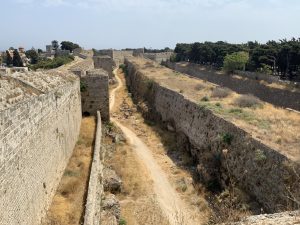
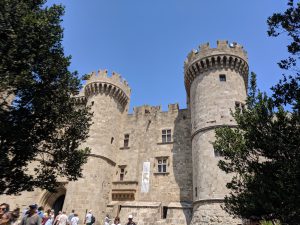
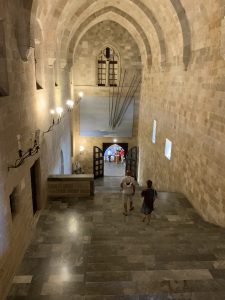
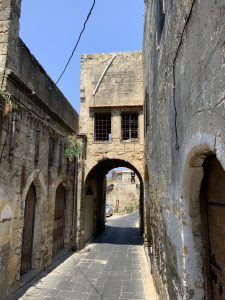
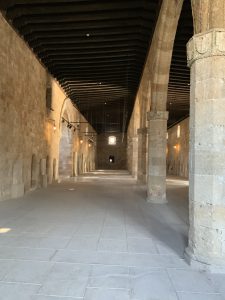
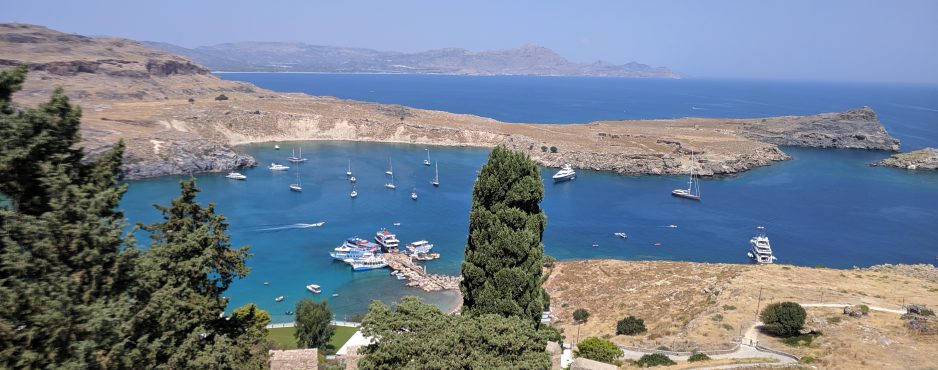
1 Comment
Ruth and Nick Pearman
Thank you for this enthusiastic and informative blog and really super photos. Love thinking of you exploring and discovering and admire the discipline of getting the highlights into a written record before the excitement fades. Rxx